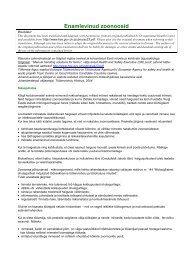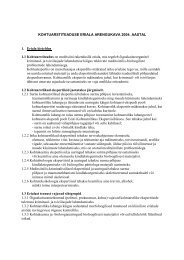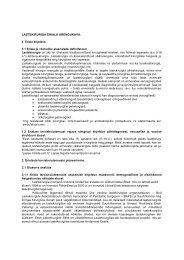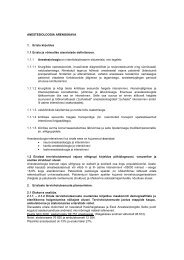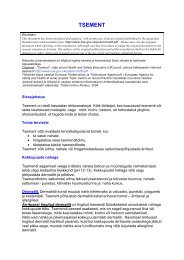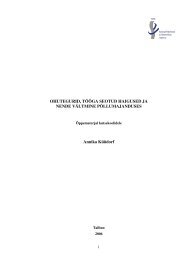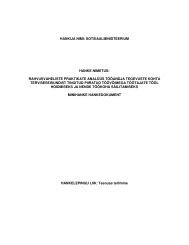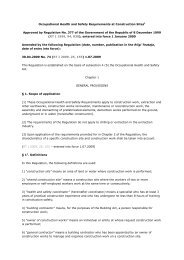SErIES IAEA HumAn HEAltH SErIES IAEA Hum
SErIES IAEA HumAn HEAltH SErIES IAEA Hum
SErIES IAEA HumAn HEAltH SErIES IAEA Hum
Create successful ePaper yourself
Turn your PDF publications into a flip-book with our unique Google optimized e-Paper software.
5.1.2.2. Occupational and public exposures<br />
Hazardous areas must be appropriately classified and identified.<br />
Members of staff who are occupationally exposed to radiation must be<br />
identified and monitored with personal monitoring devices as specified by local<br />
laws and international standards. Records of the results of such monitoring must<br />
be kept and made available to the relevant staff.<br />
Protective devices must be available and worn by staff as appropriate.<br />
Policies must be in place for providing radiation counselling, additional<br />
shielding and radiation monitoring (as appropriate for the exposure environment)<br />
for staff who declare that they are pregnant. If possible, temporary rotation of<br />
pregnant staff to environments with no exposure or a lower exposure should be<br />
considered.<br />
Visitors must be provided with adequate radiation protection as appropriate.<br />
All X ray equipment, including mobile equipment, must be utilized in<br />
rooms with adequate shielding as specified by local laws and following the<br />
widely accepted recommendations of national and professional bodies [30, 31].<br />
Calculations must be done for appropriate shielding and then verified by<br />
measurements. Changes in functional design or patient workload must be<br />
regularly monitored to ensure protection of all staff and members of the public.<br />
Emergency contingency plans must be available for the protection of staff<br />
and the public.<br />
5.1.3. Quality assurance processes for imaging equipment<br />
5.1.3.1. Selection of equipment<br />
The first step in good QC of equipment is the selection of high quality<br />
equipment appropriate for the required clinical imaging procedure.<br />
Selection of equipment should be undertaken by a team of senior staff,<br />
including a specialist radiological medical practitioner, a senior radiographer and<br />
a medical physicist. This process will usually involve the drafting of equipment<br />
specifications, a tender process and evaluation of the resulting tenders.<br />
Fundamental considerations for equipment specifications should include:<br />
(a)<br />
(b)<br />
(c)<br />
(d)<br />
(e)<br />
Site requirements and room design;<br />
Radiation shielding (or magnetic and radiofrequency shielding for MRI<br />
units);<br />
Technical specifications for equipment performance;<br />
Image quality requirements;<br />
Patient dose implications;<br />
49




